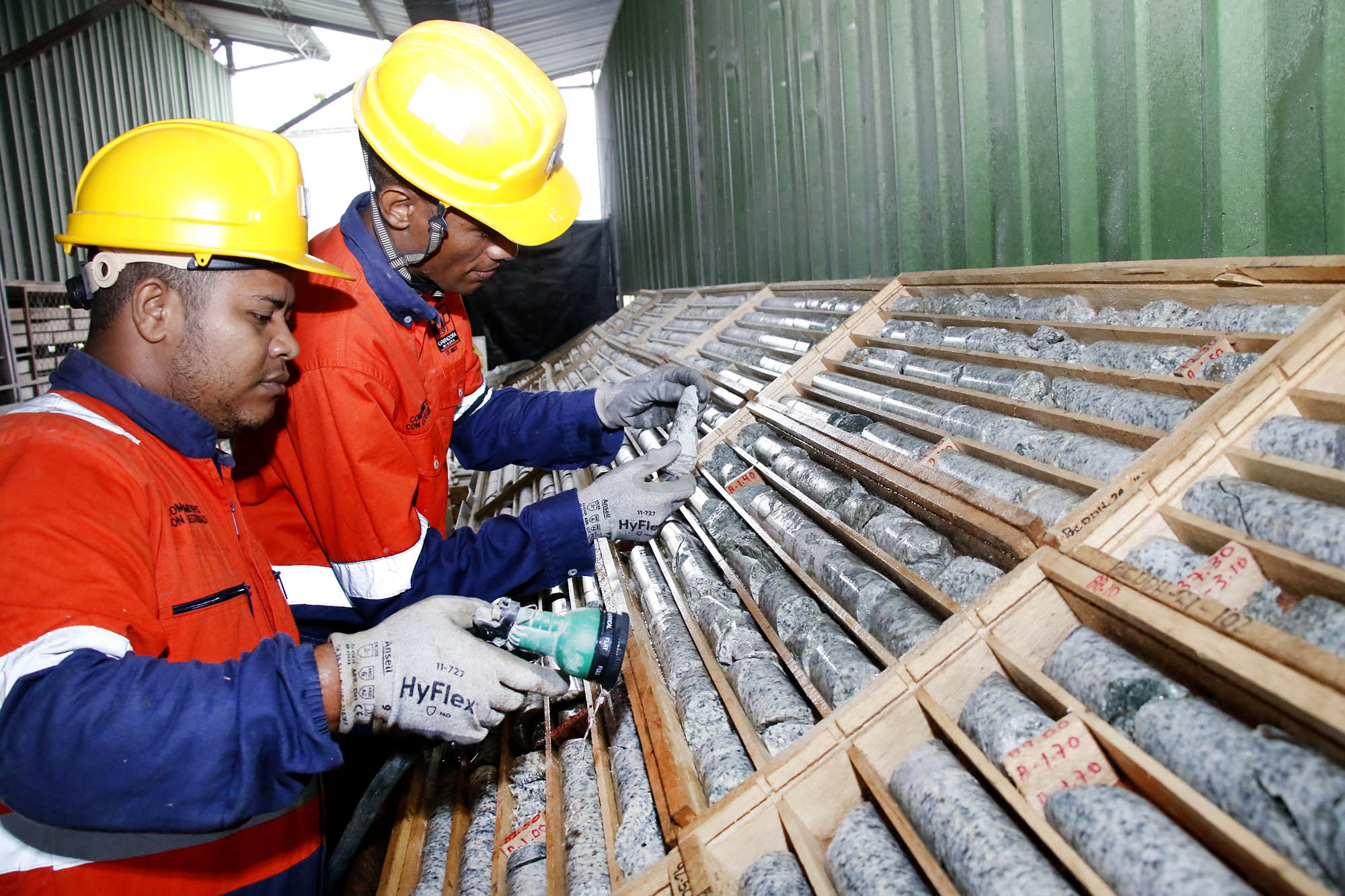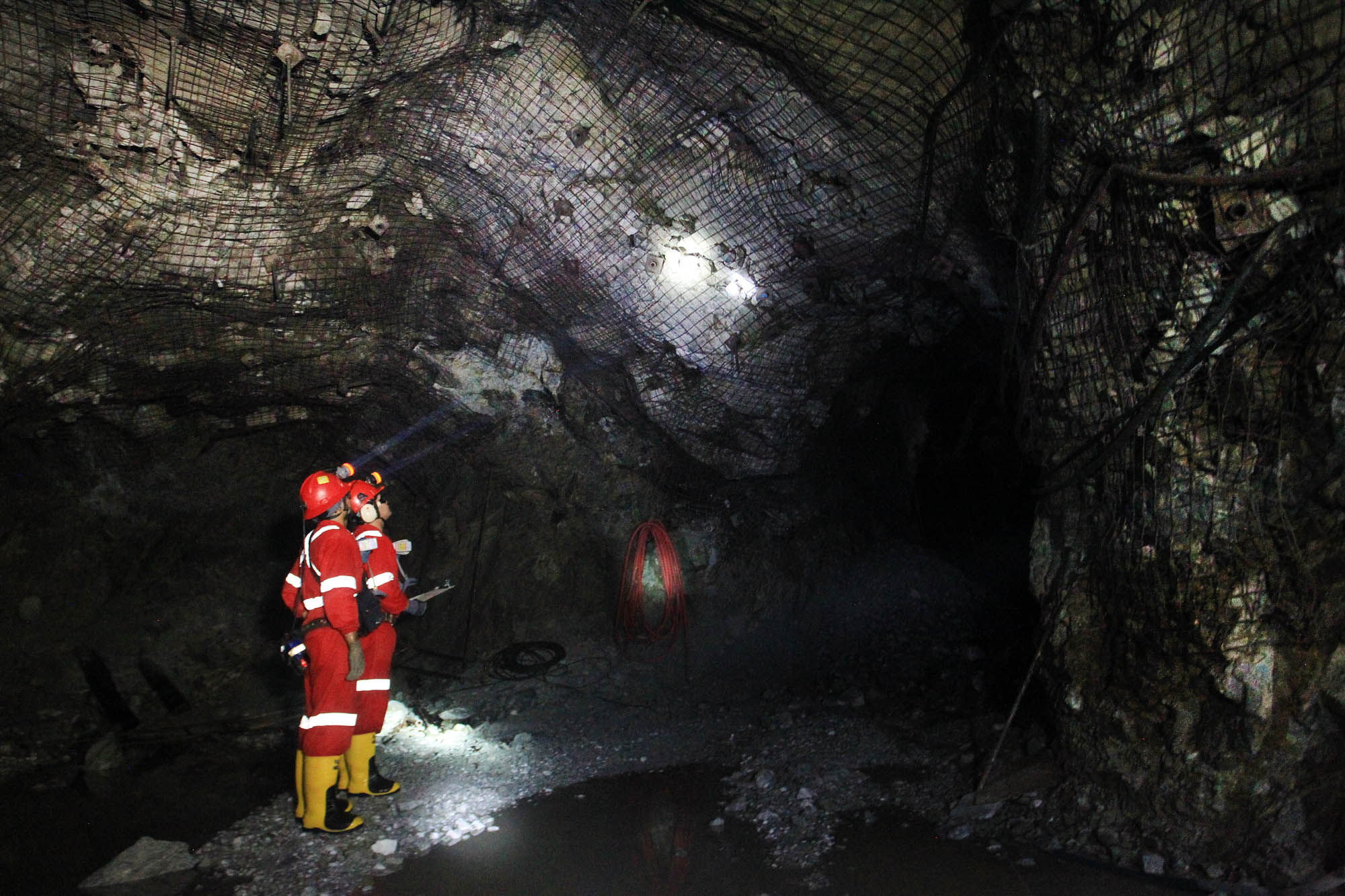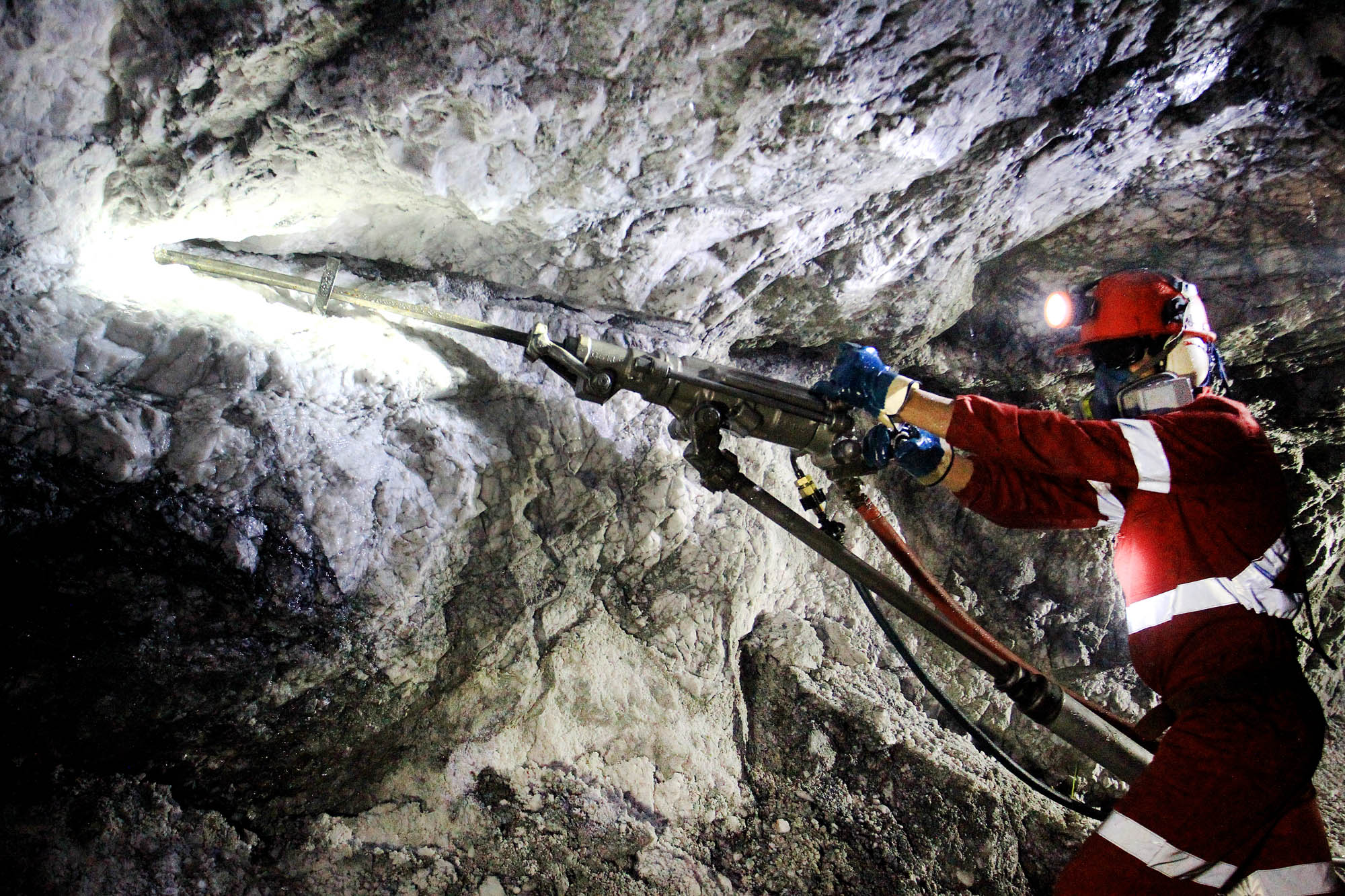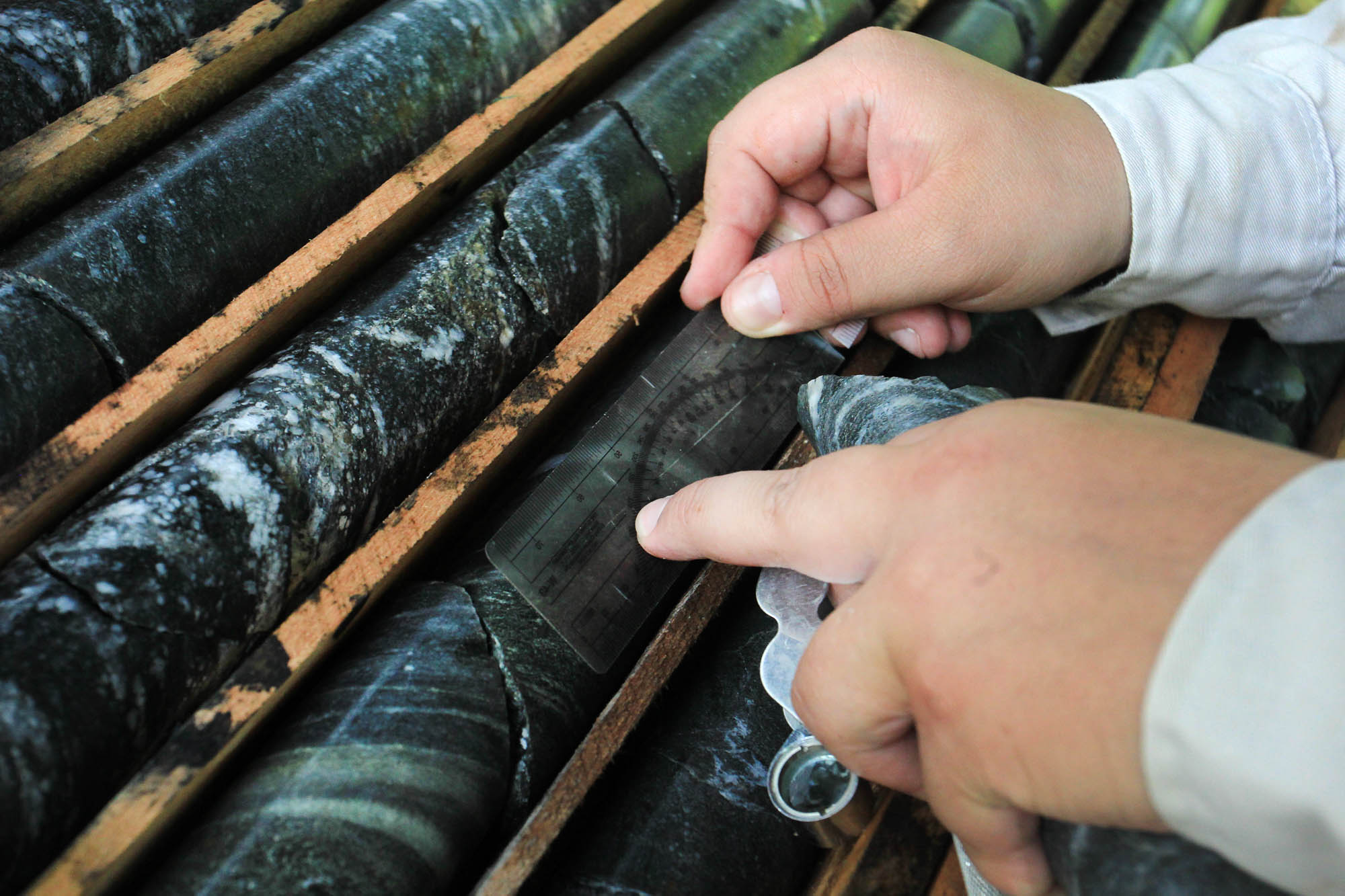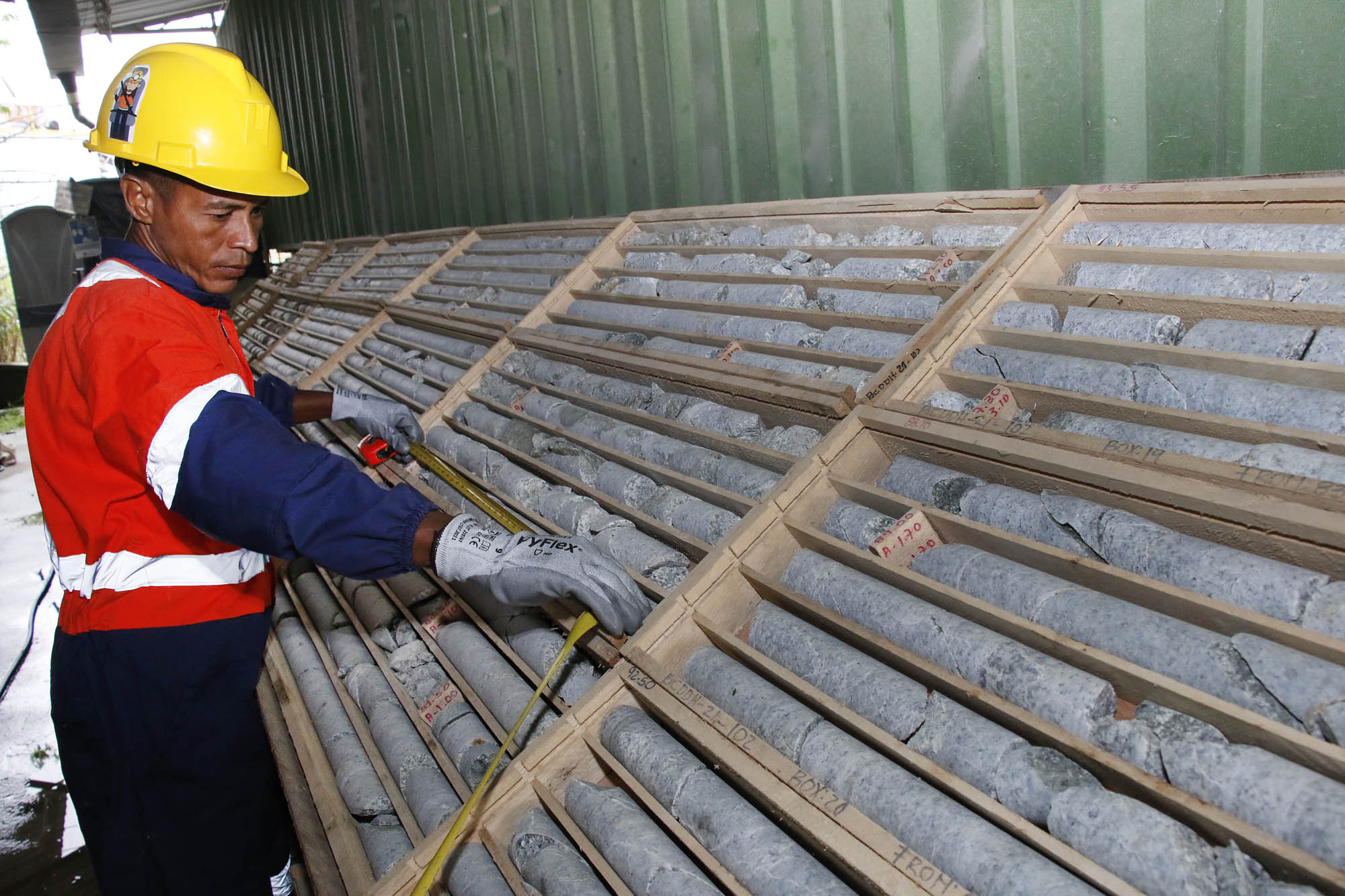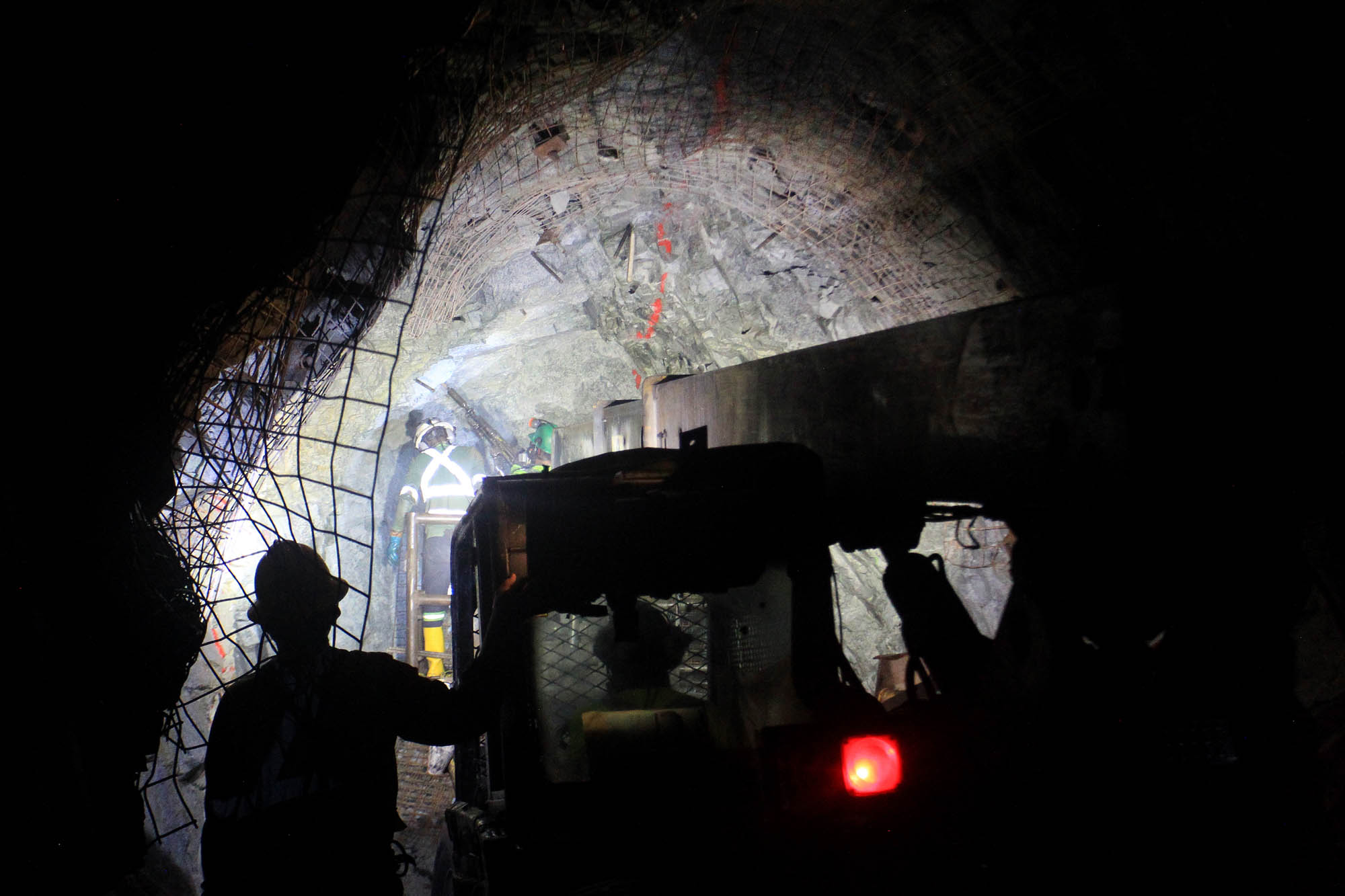Regional Geology
Soma’s projects lie within the Central Cordillera of the Andes Mountains. In the Bagre-Nechí gold mining district. The vast majority of historical gold production in this district has come from alluvial deposits within river basins, including the Nechí River. In addition to alluvial mining, abundant, informal small scale underground mines and several more formal mining operations have existed for over 100 years. It has been estimated that the area between Nechi and Segovia has produced over 18M ounces of gold without considering informal mining which is estimated to be 2-3 times the formal production. It is one of the most prolific and under-explored land packages in the world.
The Otú Fault juxtaposes older gneissic metamorphic rocks to the west against younger metasedimentary rocks and the Segovia Batholith to the east. The fault system controls high-grade gold mineralization along its entire strike-length from Segovia-Remedios in the south to Nechi in the north. Gold-bearing quartz veins form in conjugate brittle-ductile faults associated with late-stage movements of the Otú Fault System. Numerous small-scale informal mines occur throughout the area and are an indication of the prospectivity along this regional-scale trend. Notable mines along the Otú trend include: Segovia-Remedios, La Aurora, El Limon, Le Ye, Los Mangos, and Cordero. Soma’s land package is located along a critical segment of this regional fault system and contains numerous indications of high-grade gold mineralisation.
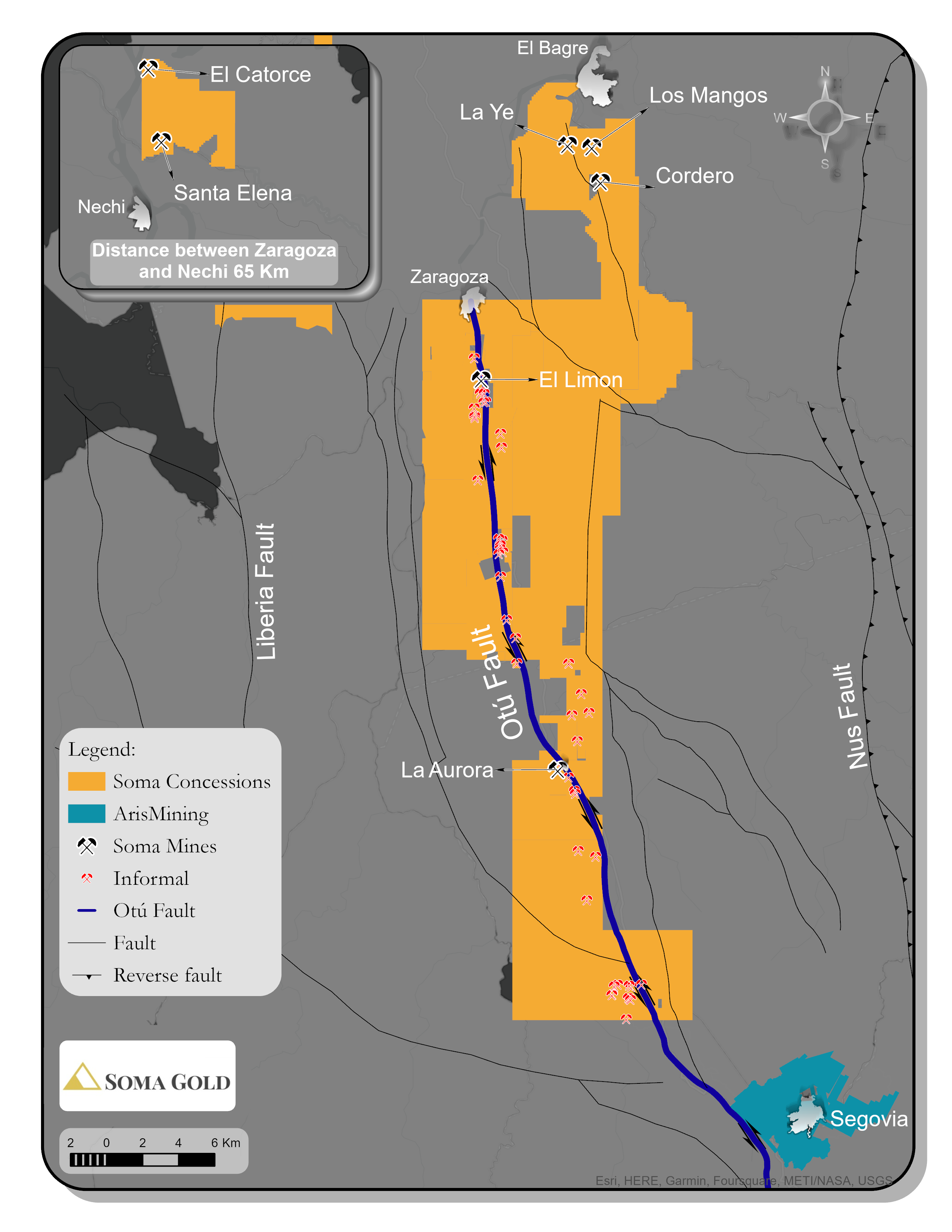
Nechi Project
The underground Nechí Project (Nechí) is located approximately 350 km from the city of Medellín, in the department of Antioquia, Colombia. The municipality is bordered to the south by the municipality of El Bagre, Soma’s primary base of operations.
Nechí consists of the El Catorce, Santa Elena, and Santa Maria deposits. The Nechi deposits are hosted in diorite to granodiorite rocks of the Segovia Batholith. The structures that control gold mineralisation at the deposits have north- and east-northeast-trending orientations patterns. The orientation patterns and quartz vein geometery is similar the structures that control gold mineralisation along the southern extent of the Otu Fault System and at Segovia-Remedios.
Test mining has been performed at both El Catorce and Santa Elena with underground sampling along the levels and in raises driven up the dip of the veins. Material from the test mining was successfully processed at the El Bagre Mill, and the Nechi deposits have the potential to both increase the throughput and extend the life of the Company’s El Bagre Gold Mining Complex.
Soma Gold Corp. plans to conduction exploration and in-fill drilling at Nechi in 2024.
Bagre Project
A number of exploration targets have been identified in the immediate area of the Bagre Mill Complex. These include possible extensions to the La Ye quartz vein system, north and south of the historical deposit. There are also new exploration drill targets identified from the updated structural interpretation of the Cordero Deposit.
Identifying new zones of economic gold mineralization on the Bagre Project will provide easy-to-access mineral resources for the Bagre Mill.
Diamond drilling on the Bagre Project began in late 2022 and will continue through 2024.
Zara Project
To the south of El Limon, the Company owns 100% of the Zara Exploration Project (“Zara”). Zara is contiguous with the El Bagre and El Limon Projects, and together they form a highly prospective concession package totaling over 29,000 Ha.
The Company has outlined several high priority exploration targets on its Zara properties based on the existence of historical and existing artisanal mining operations.
These include (north to south):
- Estrella
- Limon
- Alacran-Diamantina
- Primavera
- Limoncita
- Cañon de Rojas
For 2024, the Company is planning on completing 10,000m of surface diamond drilling along the trend of the Otu Fault across the Zara Project.
Soma has also planned a robust program of grass roots exploration to identify additional targets for future drilling. This work is to include an airborne magnetic, radiometric and topographic survey, prospecting, mapping and soil and stream sediment sampling.
Otu Project
The Otu project is immediately to the south of, and contiguous with, the Company’s existing Zara exploration properties in Antioquia, Colombia along the prolific Otu Fault System.
The most significant vein occurrences are at the La Aurora and Constancia mines, which have over 1,000 m of development work to a depth of 130 m. The project has had limited historical diamond drilling and most of the exploration on the property has been surface exploration and informal small-scale mining at some of the known quartz veins on the property.
Soma plans to continue its phase 1 diamond drill program initiated in December 2023. Phase 1 of the program is comprised of 5,000m of drilling designed to evaluate structural controls on the quartz veins in the La Aurora and Constancia mines. The drill holes will target the down-plunge extent of recently identified high-grade ore shoots within the mine. The deposit is also open along strike to the north and south. Evaluation of the along strike potential for mineralization will be tested during the phase 1 drilling program.
Soma continues regional exploration on the Otu Project. The 2024 program is comprised of an extensive soil survey to delineate continuity of gold mineralization between informal mines. The soil sampling and mapping programs are expected to identify drill targets for Q4 2024.
Brazil
The Company also owns 100% of the copper/gold Tucuma Exploration Project located in the Carajas metallogenic province in the State of Pará, Brazil.
The Tucuma Project is currently under option to Ero Copper Corp.

